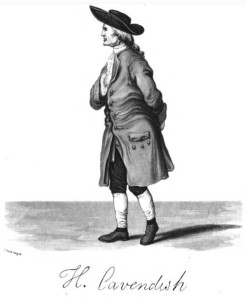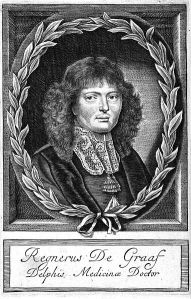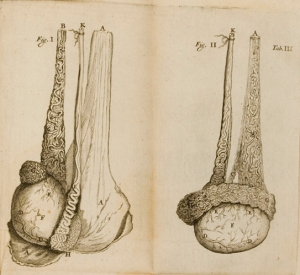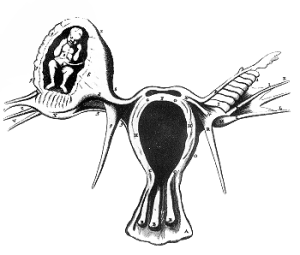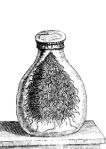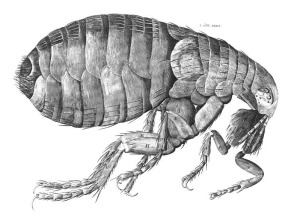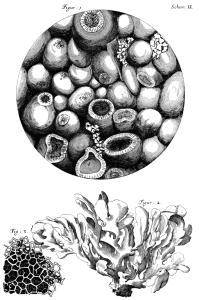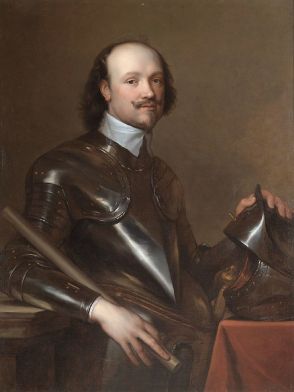 Today is the birthday of Sir Kenelm Digby, who was born in 1603 at Gayhurst in Buckinghamshire. Digby was from a wealthy family, but he had a poor start in life. His father was one of the men executed for the Gunpowder Plot. I’ve not mentioned him before, but I’ve come across Digby often in my research. He turns up in all sorts of odd places, I’ve found him fighting duels, practising sympathetic magic, being a founder member of the Royal Society, authoring a cookery book and tragically mourning the death of his wife in quite weird way. So I thought we could have a proper look at him today.
Today is the birthday of Sir Kenelm Digby, who was born in 1603 at Gayhurst in Buckinghamshire. Digby was from a wealthy family, but he had a poor start in life. His father was one of the men executed for the Gunpowder Plot. I’ve not mentioned him before, but I’ve come across Digby often in my research. He turns up in all sorts of odd places, I’ve found him fighting duels, practising sympathetic magic, being a founder member of the Royal Society, authoring a cookery book and tragically mourning the death of his wife in quite weird way. So I thought we could have a proper look at him today.
In his early teens, Digby was tutored by a preacher called Robert Napier, who taught him about medicine, astronomy and alchemy. Robert had been a student of Simon Forman, who I mentioned back in December. He later studied at Oxford under the tutelage of a mathematician and astrologer called Thomas Allen.
Kenelm Digby was also in love, with a woman called Venetia Stanley, but his mother didn’t want them to marry. In fact, she sent him to Europe in 1620 so they couldn’t see each other. He spent some time in France, at the court of the mother of the King Louis XIII, Marie de Medici. According to his own account, she was deeply attracted to him, but he had to turn her down because of his love for Venetia. But she was so insistent that he could only get away from her by pretending that he had been killed. After that, he went to Florence where he wrote to Venetia to tell her he was well. But his mother intercepted his letter and it never reached her. Meanwhile, Venetia had heard and believed the rumours of his death and almost married someone else.
Digby also visited Madrid in 1623 at a time when the Prince of Wales, the future Charles I, was visiting the city in secret. Whilst there, Digby became involved in a huge street fight. It all started with a woman singing on a balcony. One of his friends was in love with the woman and stopped to listen. But he had a rival for her affections who had set a trap for him. They were suddenly attacked by a group of strangers. Again, we only have Digby’s, probably inflated, account to go on. But they were set upon by about fifteen men, it was dark, the men were wearing lanterns on their heads, which stopped him from being able to see them well. Everyone’s swords broke but Kenelm’s. They ran away and left him to fight. But he got away and killed two of them.
Digby returned to England later that year, and married Venetia in 1625. In 1627, he became a privateer, which means he had permission from the king to sail around the Mediterranean capturing Spanish and French vessels. So he was basically a legal pirate. Quite early on, his crew fell sick and he had to find a port. He chose Algiers, which was rather a daring choice. Most English captains tried to avoid Algiers, because it was full of pirates. He had a great time there. He made friends with the Algerian pirates and feasted with them. He bought Arabic manuscripts, he visited the steam baths. He met and talked with Muslim women, which was highly unusual, if not unique, for the time. He also managed to persuade the governors of the city to release fifty English slaves. After that he went on to defeat a very large fleet of Venetian ships and then went to Greece and plundered quite a lot of classical statues, which he thought would make impressive gifts when he returned home.
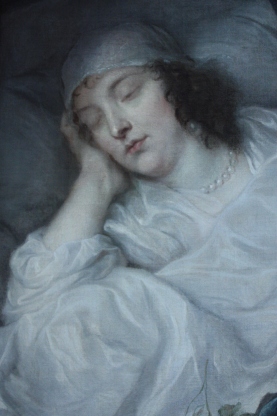
Sadly, Venetia died in her sleep in 1633. Digby was distraught. He took plaster casts of her hands, feet and face. He asked his friend, Anthony van Dyke, to paint a picture of her on her deathbed. He commissioned poets to compose verses in her praise. He summoned the poet Ben Johnson to come and look at her body, so that he might be inspired by the sight. He insisted on attending the dissection of her body, which was carried out to try to find the cause of her death. The only conclusion was that she “had very little brain”. He built a huge black mausoleum for her body with a gold bust of her on the top. He never married again.
He became less of a gregarious adventurer and more of a solitary scientist. I first came across him in connection with the ‘weapon salve‘, an ointment which could cure a wound by applying it, not to the body, but to the weapon that caused it. Digby claimed to have the secret of the ‘powder of sympathy’ which he used to cure the wound of a friend named James Howell. His hand had been cut when he tried to intervene in a duel and was in danger of developing gangrene. Digby asked for something with his blood on it and was given a garter. Then, he took a bowl of water, put a handful of powder in it and dipped the garter in the bowl. Howell, though he was unaware of what was happening, immediately felt relief. When later, Digby put the garter to dry before a fire, Howell sent word that his wound was burning worse than ever. When Digby put it back in the water, his wound was cooled again.
Kenelm Digby left England during the Commonwealth period and returned at the same time as Charles II. He was one of the founding members of the Royal Society. In fact, one of his papers, ‘Discourse Concerning the Vegetation of Plants’ was the first to be published by the society. In it, he claimed that it was possible to burn the bodies of crayfish and resurrect them from their ashes, which, in 2016, seems a bit of a wild claim. But his paper was the first to suggest that plants might draw some of their sustenance from the air.
But Digby had another surprise. After his death, his lab assistant published a book of his recipes. Kenelm Digby was a cook. During his travels, he had collected all sorts of recipes. He has an oriental recipe for ‘tea with eggs’, which is the first Chinese recipe ever published in English. Some of his recipes are European, but many of them are English. It’s a great source of information for what people were eating in the seventeenth century. Admittedly, some of them don’t sound that great. ‘Hart’s horn jelly’ and ‘barley pap’ both sound pretty awful, but his book also contains his recipe for the powder of sympathy, which I’m sure you could seek out if you were interested.
Kenelm Digby died in 1665, and was buried alongside Venetia. Sadly their tomb was lost in the Great Fire of London the following year. The gold bust was looted. Someone once caught sight of it on a market stall but, when he went back for it, it had gone. Digby’s reputation was also largely forgotten. He struggled hard against the legacy of his father’s treachery. He became a learned man, he freed slaves, he brought home plundered wealth. He was an important figure at the courts of both Charles I and Charles II. Yet he was mostly remembered as a bit of a quack, who thought you could get rid of warts by washing your hands in a bowl of moonshine. He did think that, but he also invented the wine bottle.
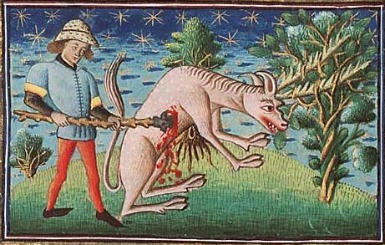 Today is the feast day of Saint Julian the Hospitaller. I’ve no idea when or where he lived, but he is easily the favourite in my category of unlikely saints. When I’m looking at saints, generally what I’m most interested in is how they are depicted in art and what they have been declared ‘patron saint’ of. A quick scroll through the information on Saint Julian revealed that he is sometimes pictured as: ‘man listening to a talking stag’ or: ‘young man killing his parents in bed’. Among other things, he is the patron saint of innkeepers, carnival workers and murders.
Today is the feast day of Saint Julian the Hospitaller. I’ve no idea when or where he lived, but he is easily the favourite in my category of unlikely saints. When I’m looking at saints, generally what I’m most interested in is how they are depicted in art and what they have been declared ‘patron saint’ of. A quick scroll through the information on Saint Julian revealed that he is sometimes pictured as: ‘man listening to a talking stag’ or: ‘young man killing his parents in bed’. Among other things, he is the patron saint of innkeepers, carnival workers and murders.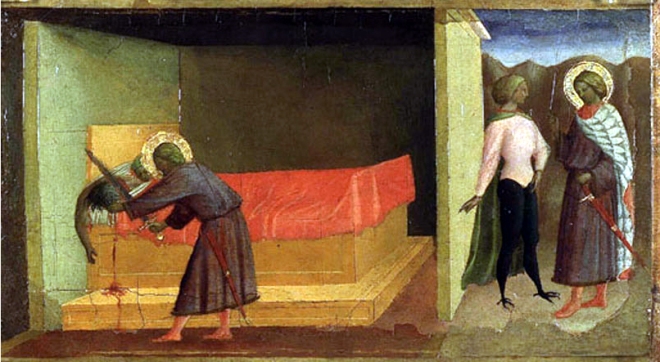 But Julian did try to escape, he ran away hoping never to see his parents again. He eluded his fate for twenty years. He settled down and got married. But when he was thirty his parents, who were searching for him arrived in the town where he lived. In a freak encounter, they met his wife who immediately invited them back to the house. Julian was, at the time, out hunting and she suggested his parents, who were tired after their journey, had a bit of a lie down while they were waiting. Meanwhile Julian was visited by a shadowy figure, who I presume to be the Devil, but he is referred to as ‘the enemy’. You can see the enemy pictured above, he’s the one in the pink leotard. The enemy told him that his wife was at home in bed with her lover. Julian rushed home, saw two figures sleeping in his bed and immediately killed them both.
But Julian did try to escape, he ran away hoping never to see his parents again. He eluded his fate for twenty years. He settled down and got married. But when he was thirty his parents, who were searching for him arrived in the town where he lived. In a freak encounter, they met his wife who immediately invited them back to the house. Julian was, at the time, out hunting and she suggested his parents, who were tired after their journey, had a bit of a lie down while they were waiting. Meanwhile Julian was visited by a shadowy figure, who I presume to be the Devil, but he is referred to as ‘the enemy’. You can see the enemy pictured above, he’s the one in the pink leotard. The enemy told him that his wife was at home in bed with her lover. Julian rushed home, saw two figures sleeping in his bed and immediately killed them both.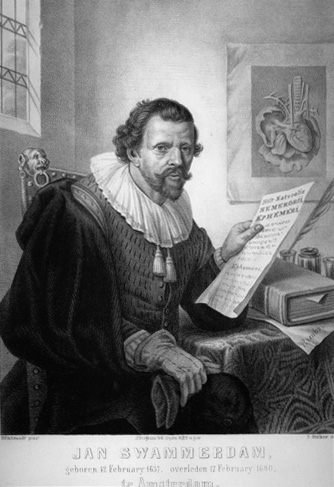 Today is also the birthday of Jan Swammerdam, which is an excellent name. Swammerdam was born on this day in 1637 in Amsterdam. He is probably best remembered for his work on insects. He discovered that insects do not spontaneously spring to life out of the mud, like everyone thought, but come from eggs and larvae. He discovered this using a microscope and once dissected a caterpillar for Cosimo de Medici to show him that it already had, inside its body, the beginnings of the wings it would grow when it became a butterfly. He also found, more than a hundred years before Galvani, that when the muscle of a frog’s leg contracts, it does not increase in size. He expected that it would because it was thought that muscles were controlled by animal spirits running through the nerves. If the muscle was full of spirits, it should get bigger. It didn’t. If anything, it shrank a little. Unfortunately, Swammerdam just thought there was something wrong with his experiment and he abandoned it.
Today is also the birthday of Jan Swammerdam, which is an excellent name. Swammerdam was born on this day in 1637 in Amsterdam. He is probably best remembered for his work on insects. He discovered that insects do not spontaneously spring to life out of the mud, like everyone thought, but come from eggs and larvae. He discovered this using a microscope and once dissected a caterpillar for Cosimo de Medici to show him that it already had, inside its body, the beginnings of the wings it would grow when it became a butterfly. He also found, more than a hundred years before Galvani, that when the muscle of a frog’s leg contracts, it does not increase in size. He expected that it would because it was thought that muscles were controlled by animal spirits running through the nerves. If the muscle was full of spirits, it should get bigger. It didn’t. If anything, it shrank a little. Unfortunately, Swammerdam just thought there was something wrong with his experiment and he abandoned it.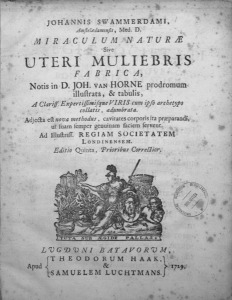 Swammerdam published his own account two months later. He said the bursting follicles thing was nonsense because he had observed the same thing in the ovaries of virgins. He also stated that he and van Horne had come up with the idea first (there was no way of proving him wrong) and also de Graafs drawings were rubbish. Swammerdam dedicated his book to the Royal Society and also sent them a beautifully preserved female uterus along with twelve other items of genital anatomy, including a dissected penis, a clitoris and a hymen. He asked the Royal Society to adjudicate in their argument over which of them had come up with the idea of women having eggs first. De Graaf came back with a publication entitled: ‘Partium Genitalium Defensio’ (Defence of the genital parts). In it he was very rude about Swammerdam and accused him of being ‘blinded by anger and hatred’, but didn’t really come up with any new evidence that would help with the egg controversy.
Swammerdam published his own account two months later. He said the bursting follicles thing was nonsense because he had observed the same thing in the ovaries of virgins. He also stated that he and van Horne had come up with the idea first (there was no way of proving him wrong) and also de Graafs drawings were rubbish. Swammerdam dedicated his book to the Royal Society and also sent them a beautifully preserved female uterus along with twelve other items of genital anatomy, including a dissected penis, a clitoris and a hymen. He asked the Royal Society to adjudicate in their argument over which of them had come up with the idea of women having eggs first. De Graaf came back with a publication entitled: ‘Partium Genitalium Defensio’ (Defence of the genital parts). In it he was very rude about Swammerdam and accused him of being ‘blinded by anger and hatred’, but didn’t really come up with any new evidence that would help with the egg controversy.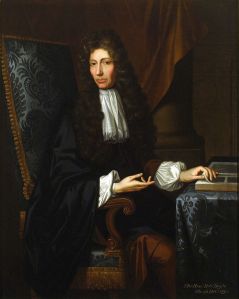 Today is the birthday of Robert Boyle, a famous chemist and founder member of the Royal Society. He was born on this day in 1627 in County Waterford, Ireland. He was the fourteenth child, and seventh son of Richard Boyle, 1st Earl of Cork. So he was born in a huge castle, Lismore Castle, which his father had bought from Sir Walter Raleigh. But Robert, like his brothers before him, was fostered out to a local Irish family so that he could learn the language. The idea was that the boys would be able to act as translators for their English-speaking father.
Today is the birthday of Robert Boyle, a famous chemist and founder member of the Royal Society. He was born on this day in 1627 in County Waterford, Ireland. He was the fourteenth child, and seventh son of Richard Boyle, 1st Earl of Cork. So he was born in a huge castle, Lismore Castle, which his father had bought from Sir Walter Raleigh. But Robert, like his brothers before him, was fostered out to a local Irish family so that he could learn the language. The idea was that the boys would be able to act as translators for their English-speaking father.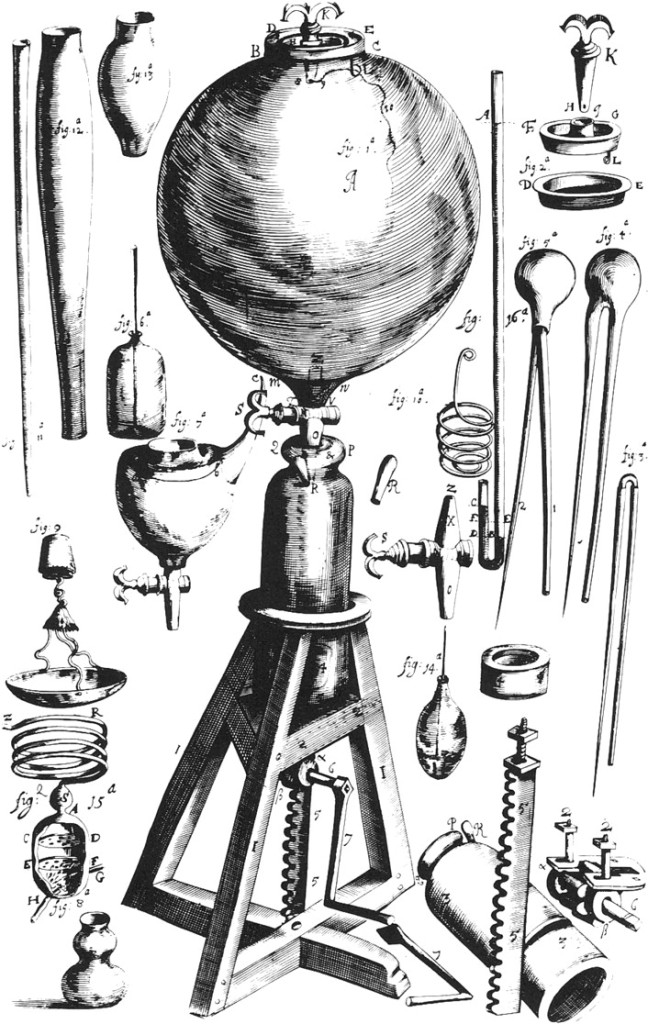 In 1657, they began to experiment with vacuums, using the equipment pictured above. It looks terrifically complex, but what it is, is a large glass container that they could put things inside and then pump all the air out to see what happened to them. They put a bell inside and used a magnet from the outside to move the bell and make it ring. As they pumped out the air, they observed that the sound of the bell became more and more faint. They had discovered that sound cannot travel through a vacuum, yet magnetic forces can, or else they would not have been able to make the bell move. Also, the experiment showed them that light could travel through a vacuum, because they could still see the bell inside. They found that a lit candle went out when they removed the air, proving that a vacuum will not support combustion. Boyle made a further guess that it was only a small part of the air that allowed the flame to burn. No one was yet able to separate the different gases in the air but, over a hundred years later he would be proved right.
In 1657, they began to experiment with vacuums, using the equipment pictured above. It looks terrifically complex, but what it is, is a large glass container that they could put things inside and then pump all the air out to see what happened to them. They put a bell inside and used a magnet from the outside to move the bell and make it ring. As they pumped out the air, they observed that the sound of the bell became more and more faint. They had discovered that sound cannot travel through a vacuum, yet magnetic forces can, or else they would not have been able to make the bell move. Also, the experiment showed them that light could travel through a vacuum, because they could still see the bell inside. They found that a lit candle went out when they removed the air, proving that a vacuum will not support combustion. Boyle made a further guess that it was only a small part of the air that allowed the flame to burn. No one was yet able to separate the different gases in the air but, over a hundred years later he would be proved right.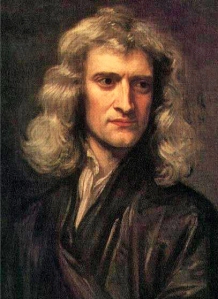 First of all, a very merry Christmas to you or, if Christmas is not your thing, I hope your day is going as well as can be expected. Today is the birthday of Isaac Newton. Well, it sort of is. It depends how you look at it. Newton was born on December 25th 1642. But in 1752, when Britain adopted the Gregorian Calendar, his birthday became January 4th 1753. But, as he died in 1726, that didn’t trouble him, so it needn’t trouble us either.
First of all, a very merry Christmas to you or, if Christmas is not your thing, I hope your day is going as well as can be expected. Today is the birthday of Isaac Newton. Well, it sort of is. It depends how you look at it. Newton was born on December 25th 1642. But in 1752, when Britain adopted the Gregorian Calendar, his birthday became January 4th 1753. But, as he died in 1726, that didn’t trouble him, so it needn’t trouble us either.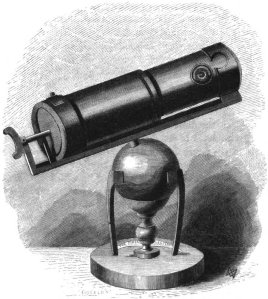 It was also at this time that he made his discovery that white light was made up from all the colours of the rainbow combined. You probably know he did this using a prism. But before this, he did another experiment on himself. He took a large needle, stuck it between his eyeball and his skull and wiggled it around a bit to see how it affected his vision. He saw white, dark and coloured circles. Don’t try this at home. He also noticed that the curved edges of the lens in a telescope tended to work in the same way as a prism and create coloured flares around the object being observed. Telescopes were, in those days, many feet long and quite cumbersome. Newton built himself a much shorter telescope, which used mirrors instead of a lens, that was free from the colour distortion. He had invented the reflecting telescope. It was only six inches long but could magnify forty times, much better than a telescope ten times as long. The huge telescopes we use today, even the ones we launch into space, are based on Newton’s model. He thought of it as just a toy, but one of his friends took it to show Charles II and, as a result, he was made a member of the Royal Society and became pretty famous.
It was also at this time that he made his discovery that white light was made up from all the colours of the rainbow combined. You probably know he did this using a prism. But before this, he did another experiment on himself. He took a large needle, stuck it between his eyeball and his skull and wiggled it around a bit to see how it affected his vision. He saw white, dark and coloured circles. Don’t try this at home. He also noticed that the curved edges of the lens in a telescope tended to work in the same way as a prism and create coloured flares around the object being observed. Telescopes were, in those days, many feet long and quite cumbersome. Newton built himself a much shorter telescope, which used mirrors instead of a lens, that was free from the colour distortion. He had invented the reflecting telescope. It was only six inches long but could magnify forty times, much better than a telescope ten times as long. The huge telescopes we use today, even the ones we launch into space, are based on Newton’s model. He thought of it as just a toy, but one of his friends took it to show Charles II and, as a result, he was made a member of the Royal Society and became pretty famous.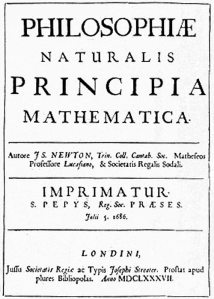 By the time he was in his early forties though, he went back to physics. Edmund Halley asked him a question about the shape of orbit described by a planet. Newton had worked it out ages ago and it was an ellipse. Astronomers thought that the planets were held in orbit around the sun by some force, but they didn’t know what it was. Newton used his calculus to prove that it was gravity that made the planets move the way they did. But he wanted to know why they remained in motion. He worked tirelessly over the next eighteen months to figure it out. The result was his most famous work ‘Principia Mathematica’. It was hugely important and explained how the whole universe might work and how everything in it obeyed the same laws of gravity. If you throw a ball it travels in an arc because it is must eventually fall back to earth. But planets also travel in an arc for basically the same reason. His Principia is where he came up with his three laws of motion. That an object will tend to remain travelling in a straight line, that its speed depends on the force that started it moving and that for every action, there is an equal and opposite reaction. The moon remains in orbit around the earth because the speed that it is moving is balanced by the pull of the Earth’s gravity. The proportions are just right to stop it either drifting away from us or falling down to earth. If this was true for the earth and the moon, it could be true for the whole of the solar system, the whole of the universe. He called it his ‘Universal Law of Gravitation’.
By the time he was in his early forties though, he went back to physics. Edmund Halley asked him a question about the shape of orbit described by a planet. Newton had worked it out ages ago and it was an ellipse. Astronomers thought that the planets were held in orbit around the sun by some force, but they didn’t know what it was. Newton used his calculus to prove that it was gravity that made the planets move the way they did. But he wanted to know why they remained in motion. He worked tirelessly over the next eighteen months to figure it out. The result was his most famous work ‘Principia Mathematica’. It was hugely important and explained how the whole universe might work and how everything in it obeyed the same laws of gravity. If you throw a ball it travels in an arc because it is must eventually fall back to earth. But planets also travel in an arc for basically the same reason. His Principia is where he came up with his three laws of motion. That an object will tend to remain travelling in a straight line, that its speed depends on the force that started it moving and that for every action, there is an equal and opposite reaction. The moon remains in orbit around the earth because the speed that it is moving is balanced by the pull of the Earth’s gravity. The proportions are just right to stop it either drifting away from us or falling down to earth. If this was true for the earth and the moon, it could be true for the whole of the solar system, the whole of the universe. He called it his ‘Universal Law of Gravitation’.